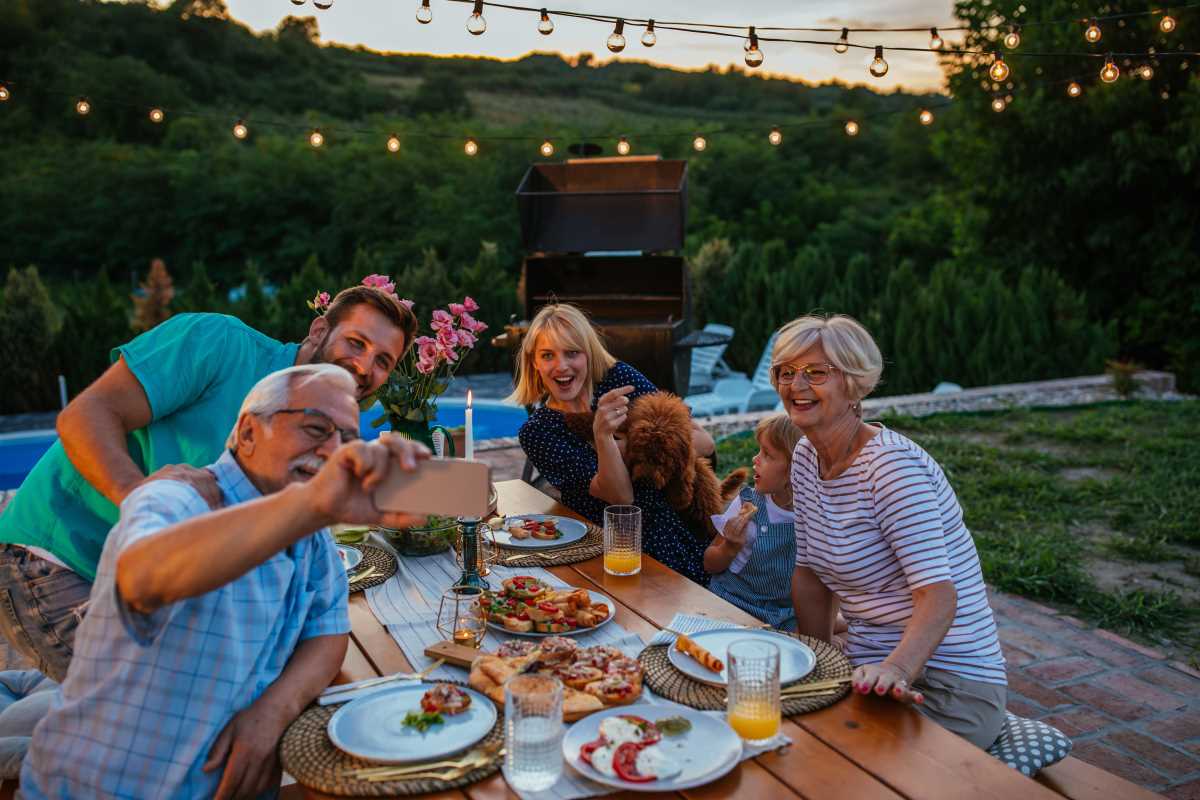Sharing delicious meals and enjoyable activities at home builds a warm and lively atmosphere for everyone. Preparing a thoughtful dinner and pairing it with a simple, engaging activity encourages laughter, conversation, and connection among family members. When daily routines seem to lose their spark, introducing new recipes or games can break up the monotony and add excitement to your evenings. Small changes in how you cook or spend time together can create lasting memories and help everyone look forward to time at home. Discovering new ways to blend tasty food with fun pastimes can make every day feel a little more special.
This guide offers practical tips to boost energy through nutritious meals and lively routines. It’s a simple approach that blends tasty recipes, easy meal planning techniques, and engaging activities to keep everyone looking forward to the next bite and the next adventure. Let’s dive into some ideas that make it easy to switch up your home routine and add an energetic twist.
Meal Planning Tips for Lasting Energy
Creating a meal plan that keeps energy levels steady becomes easier than it might seem. Planning ahead helps you avoid the last-minute scramble that leads to less nutritious choices. Think about mixing proteins, whole grains, and colorful vegetables to get a balance of nutrients. In practice, small changes can make mealtime a creative process that sparks energy and excitement in your family.
Try exploring a variety of options that require minimal preparation and deliver maximum nourishment. These useful tips can make meal times more enjoyable while keeping everyone active. Here are some ideas you can try:
- Schedule weekly planning sessions to outline your meals for the week ahead.
- Incorporate fresh seasonal fruits and vegetables for natural vitamins.
- Add lean proteins like chicken, fish, or legumes to support steady energy.
- Prepare portions in advance using meal prep ideas to save time during busy evenings.
The goal is to design a plan that not only caters to a variety of nutritional needs but also fits seamlessly into your day-to-day responsibilities. Small steps, like prepping ingredients ahead of time, can lead to big improvements in your household’s overall energy.
Keeping your meals both delicious and energy-boosting requires creativity. Whether you experiment with different spices or add a crunchy salad to your favorite dish, these meal planning tips can help you craft a dynamic dining experience that everybody can enjoy.
High-Energy Recipes the Whole Family Will Love
Catering to everyone’s taste can sometimes be a juggling act, but these recipes are built around getting energy-boosting nutrients in a delightful way. Each recipe is designed to be hassle-free and interchangeable with a variety of sides and vegetables. They work for both a quick family dinner and a relaxed weekend brunch.
Here are some fun recipes that pack a flavorful punch while fueling your day with high-energy ingredients:
- Veggie-Packed Stir-Fry: Sauté a mix of bell peppers, broccoli, snap peas, and carrots with tofu or lean meat. Serve over brown rice to combine protein and fiber for lasting energy.
- Quinoa Salad Surprise: Toss cooked quinoa with cherry tomatoes, cucumbers, spinach, and a drizzle of olive oil. This dish is light yet satisfying, perfect for a midday boost.
- Whole Grain Pasta Primavera: Mix whole grain pasta with a medley of fresh veggies and a sprinkle of parmesan cheese. This easy dish brings a burst of color and nutrients in every bite.
- Berry Smoothie Bowl: Blend frozen berries, a banana, and Greek yogurt. Top it with granola and a few fresh slices of kiwi for a refreshing breakfast or snack option.
- Oven-Baked Salmon with Veggies: Season salmon fillets and bake them along with chunks of sweet potato and asparagus. This dish is as visually appealing as it is nourishing.
Each recipe is designed to be flexible enough to allow creativity while also providing the foundation for meals that keep fatigue at bay. They work well for varied schedules and can be altered to suit the dietary preferences in your home.
Feel free to mix up ingredients that your family loves using these recipes as a basis. This approach not only diversifies your weekly menu but also encourages everyone to join in on healthy cooking, making meal times more interactive and fun.
Fun Activities to Pair with Meals
What you do before, during, or after mealtime greatly influences how energized and connected everyone feels. Pairing simple, enjoyable physical activities with your meals can turn an ordinary day into something special. From a game of catch in the backyard to a family walk around the block, these activities boost digestion and lift a positive mood.
Try adding a playful twist to your typical dining routine. Involve everyone in age-appropriate activities that align with meal times. Little bursts of movement like stretching or a gentle dance-off right after dinner can boost energy levels and add a touch of fun to your daily routine.
Engaging in activities that naturally transition from one part of your day to the next can help everyone avoid the afternoon slump. These moments of movement offer a mental reset, making the transition between meals and activities feel natural and enjoyable.
Focus on spending quality time together. Even small activities can make a significant difference in how refreshed and connected each person feels throughout the day.
Simple Routines to Maximize Household Energy
Establish routines that combine healthy eating with light physical activity to keep your household running smoothly. Being intentional about mealtime and movement encourages everyone to participate and stick with habits that improve overall energy. Maintaining regularity with meals followed by a fun activity can help keep energy levels high and moods positive throughout the day.
A clear schedule can also reduce the tension that sometimes comes with decision-making during busy times. With a game plan in place, daily life flows more easily, allowing you to enjoy both variety and structure. Here are some practical approaches to consider:
- Create a family calendar that outlines meal times and suggests a quick outdoor or indoor activity right after eating.
- Plan for 15-20 minutes of light stretching or playing a simple game after dinner to transition smoothly to the evening.
- Keep portable snacks ready that complement your meals and can serve as mini energy boosters when needed.
- Set up a rotating responsibility system for choosing the next meal or activity. This system ensures everyone gets a chance to contribute and keeps the routine fresh.
Adding these habits helps everyone, from the youngest members to adults, develop routines that balance nutritious eating and light exercise. When meal times naturally lead into engaging activities, your daily rhythm becomes more lively and less stressful.
Adjust these suggestions to suit your family’s needs. Enjoy finding meals and routines that brighten everyone’s day.
 (Image via
(Image via





